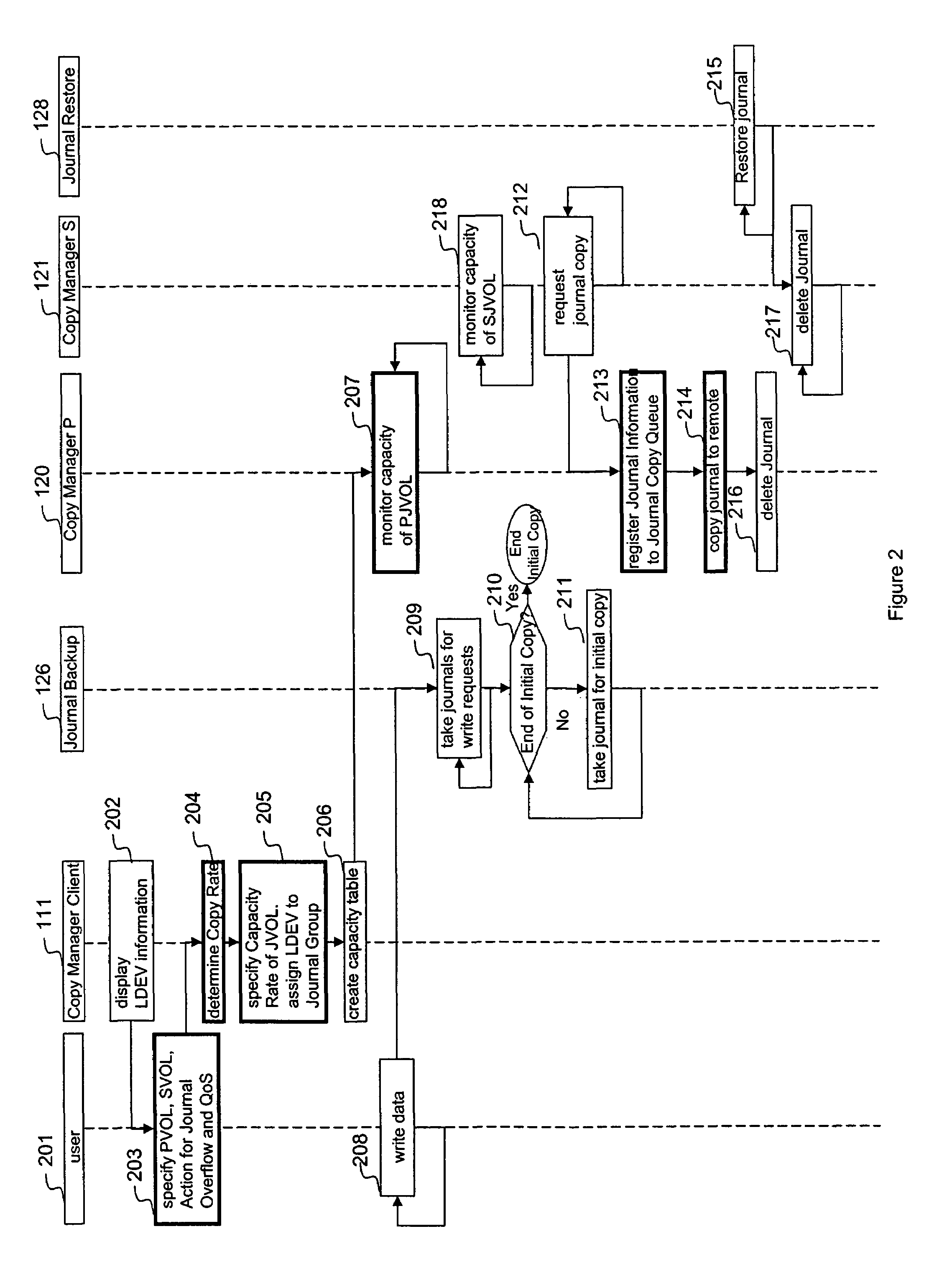Using bandwidth and capacity parameters to control remote copy operations in storage systems
a technology of remote copying and capacity parameters, applied in the field of storage systems, can solve the problem that data with a lower priority may not be copied to the remote site for a long tim
- Summary
- Abstract
- Description
- Claims
- Application Information
AI Technical Summary
Benefits of technology
Problems solved by technology
Method used
Image
Examples
Embodiment Construction
[0025]In a typical storage system, users will have many different kinds and types of data stored of a variety of values. A level of Quality of Service (QoS) for the protection of various user data can be chosen to depend upon the value of the data based upon the user's desired QoS. For example, the user may desire to minimize the total cost of operation based upon a Recovery Point Objective (RPO) or a Recovery Time Objective (RTO). A RPO is a measure of the time between data protection events. This measure translates into the amount of data which is at risk of being lost, for example because it is new data which has been generated since the last remote copy operation. Thus, if a copy operation is performed every five minutes, the user data for the last five minutes can be lost if the system fails. An RTO is a measure of how long it takes a user to recover from an event causing loss of data. In other words, it is a measure of the amount of time required to “return to service” reflect...
PUM
 Login to View More
Login to View More Abstract
Description
Claims
Application Information
 Login to View More
Login to View More - R&D
- Intellectual Property
- Life Sciences
- Materials
- Tech Scout
- Unparalleled Data Quality
- Higher Quality Content
- 60% Fewer Hallucinations
Browse by: Latest US Patents, China's latest patents, Technical Efficacy Thesaurus, Application Domain, Technology Topic, Popular Technical Reports.
© 2025 PatSnap. All rights reserved.Legal|Privacy policy|Modern Slavery Act Transparency Statement|Sitemap|About US| Contact US: help@patsnap.com



